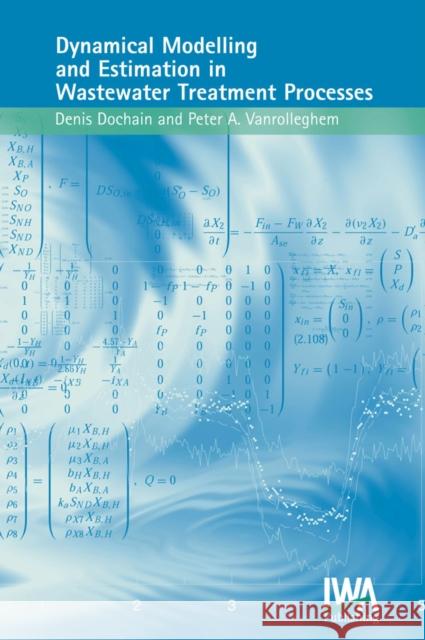Dynamical Modelling & Estimation in Wastewater Treatment Processes » książka
Dynamical Modelling & Estimation in Wastewater Treatment Processes
ISBN-13: 9781900222501 / Angielski / Twarda / 2001 / 358 str.
Dynamical Modelling & Estimation in Wastewater Treatment Processes
ISBN-13: 9781900222501 / Angielski / Twarda / 2001 / 358 str.
(netto: 680,51 VAT: 5%)
Najniższa cena z 30 dni: 705,79 zł
ok. 30 dni roboczych
Bez gwarancji dostawy przed świętami
Darmowa dostawa!
Environmental quality is becoming an increasing concern in our society. In that context, waste and wastewater treatment, and more specifically biological wastewater treatment processes play an important role. In this book, we concentrate on the mathematical modelling of these processes. The main purpose is to provide the increasing number of professionals who are using models to design, optimise and control wastewater treatment processes with the necessary background for their activities of model building, selection and calibration. The book deals specifically with dynamic models because they allow us to describe the behaviour of treatment plants under the highly dynamic conditions that we want them to operate (e.g. Sequencing Batch Reactors) or we have to operate them (e.g. storm conditions, spills). Further extension is provided to new reactor systems for which partial differential equation descriptions are necessary to account for their distributed parameter nature (e.g. settlers, fixed bed reactors). The model building exercise is introduced as a step-wise activity that, in this book, starts from mass balancing principles. In many cases, different hypotheses and their corresponding models can be proposed for a particular process. It is therefore essential to be able to select from these candidate models in an objective manner. To this end, structure characterisation methods are introduced. Important sections of the book deal with the collection of high quality data using optimal experimental design, parameter estimation techniques for calibration and the on-line use of models in state and parameter estimators.
Environmental quality is becoming an increasing concern in our society. In that context, waste and wastewater treatment, and more specifically biological wastewater treatment processes play an important role. In this book, we concentrate on the mathematical modelling of these processes. The main purpose is to provide the increasing number of professionals who are using models to design, optimise and control wastewater treatment processes with the necessary background for their activities of model building, selection and calibration.The book deals specifically with dynamic models because they allow us to describe the behaviour of treatment plants under the highly dynamic conditions that we want them to operate (e.g. Sequencing Batch Reactors) or we have to operate them (e.g. storm conditions, spills). Further extension is provided to new reactor systems for which partial differential equation descriptions are necessary to account for their distributed parameter nature (e.g. settlers, fixed bed reactors).The model building exercise is introduced as a step-wise activity that, in this book, starts from mass balancing principles. In many cases, different hypotheses and their corresponding models can be proposed for a particular process. It is therefore essential to be able to select from these candidate models in an objective manner. To this end, structure characterisation methods are introduced. Important sections of the book deal with the collection of high quality data using optimal experimental design, parameter estimation techniques for calibration and the on-line use of models in state and parameter estimators.











